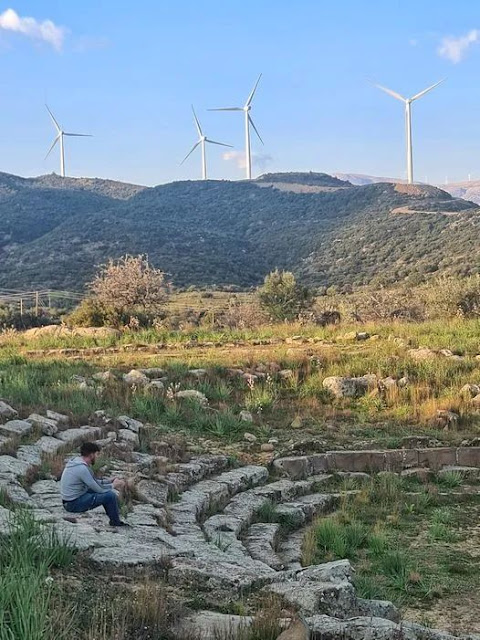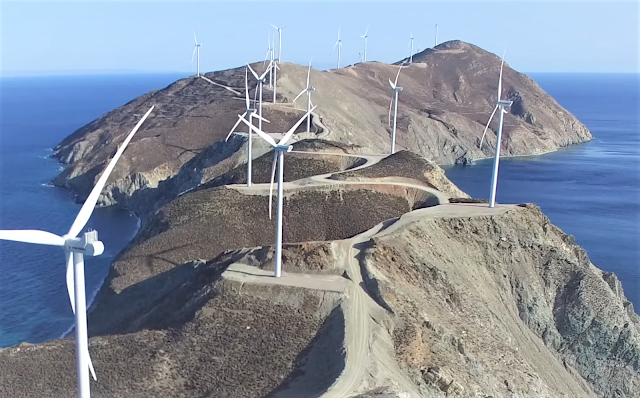.JPG)
Ecotourism in Costa Rica: Recent experiences
Summer 2022
Had a wonderful 23 day trip to Costa Rica this summer. This included our summer vacation (traveling as a couple) and a collaboration with the National University for a seminar-workshop.
On the past two trips to CR we've spent about 35 days in the field and have stayed at number of hotels and a friend's home; often travelling in pursuit of the wild, the rural, and for work: for landscape assessment study; and for birding.
Here I present some raw ideas concerning ecotourism in CR, and particularly "wildlife watching development" in this country. We are interested in supporting the connection between culture and biodiversity, and of course CR is famous for having some success here. Lets study this; some points:
A. CR's success in park management is real, its not just tourist hype.
Parks look good in CR. They seem to really be functioning well. We have limited knowledge of the details but from our experience there is good control inside the parks, excellent infrastructure, good interpretation - in both public and private reserves. OUTSIDE, around and near the parks situations may NOT be ideal and we have recorded on-going damage including old-growth tree logging, etc. Poaching, roading, roading and road-kills, disturbance from landscape-scale building sprawl and tourist-and-holiday home developments are a serious problem, especially on and near the coast in some places. Much of the change is rather hidden by much forest re-growth so it may not be immediately apparant (simply not-in-view due to the tall treed conditions). But the landscapes are changing in many, many places. So the paradox is this: Good parks, reforestation in many areas, -but lots of degradation on the coasts and near cities and towns.
B. Huge supply of lodges or other accomodation: Great choices for wildlife watching, study, field-based education.
Despite the negative aspects of tourism, there are many positive ones in Costa Rica. CR has many very good accommodations often with private gardens, trail systems, observation towers, artificial ponds, birdfeeders, etc. These are excellent places to observe wildlife and make the wildlife travel experience of much higher quality. Things can only get better.
One tiny exception, with regards to a recent trend to stop bird-feeding. Some policies such as avoiding/not permiting bird-feeding in tourist establishments or in some protected areas we think are largely unfounded. For example, in Santa Elena Reserve there are no hummer feeders due to policy. We understand the logic of this, but we disagree. Having just two (2!) hummer feeders near the entrance facility would not impinge on the population biology of the areas' birds! It is very hard for a visitor to observe hummers without feeders (also the research shows that feeders do no harm to the hummingbirds- check this out). Avitourism and the sensitization of the youth blossoms near bird feeders.
C. Birding without a guide/eco-guided tour is hard-work in CR.
It is incongruous but real: you see few birds in the tropical forest. Without the good hotels, birdfeeders and experienced guides its difficult. Seeing wildlife in CR would be much more challenging without the infrastructure. Guides with certification and personal intererest usually seem well versed and do excellent tours in CR. There seems to be competition which has increased the demand for really good guides. In Cahuita alone we were told by an experienced guide that this village has many guides: Cahuita has guides and about 30 wildlife watching scopes! (often very good ones, KOWA, SWAROWSKI etc). Cahuita has a resident population of about 1500 so this is exceptional on a global basis- we think.
D. CR is expensive as an ecotourism destination.
The experience of organizing a ecotourism experience is expensive in CR, reflecting western European prices instead of what one may expect in Latin America or other tropical destinations (e.g. Asia). Competition is high since perhaps the demand for such higher-priced conditions is rather low (compared to other types of tourism). I heard that the yearly influx of tourists is about 2 to 3 million - its still low by tourist country standards (Greece recieves about 15 to 25 million visitors per year during the last decade).
E. The major influx of tourists are not naturalists; but naturalists have and can influence tourism quality.
Although the issue of wildlife is a BIG symbol of the CR tourism industry the naturalists are a very small part of this. Very few of the tourists are actualy well-read and sensitive naturalists and even fewer are birders! For example, we saw very few birders - I mean, really very few in the field. Sure, we say the camera-totting asian photographers at the Arenal Observatory Lodge...but less than a handful of people holding well-worn binoculars. Actually, on this last trip, I saw two Costa Ricans twiching for a parrotlet at Monteverde Cloud Forest Reserve - these two guys had binoculars (and good cameras as well); but we saw no other local birders anywhere. I asked two experienced guides (at Cahuita and Arenal) and they agreed that the overwhelming majority of their clients have virtually "no clue" about nature. The guides work to spark their interest. Naturalist guides do good by sensitizing tourists and locals alike.
So these are our two bits on ecotourism so far; here we share some photos too; all taken by myself and Vassiliki Vlami in August 2022. All phots are of wild animals, not in captivity, but often near feeders.
.JPG) |
| Crimson-fronted Parakeet on a church in the Central Valley. |
 |
Wild Tapir, on our first day in Costa Rica, Braulio Carrillio National Park. |
 |
| Green Ibis, elusive, but found on a roosting tree, Braulio Carrillio National Park. |
.JPG) |
| Violet-headed Hummer, Braulio Carrillio N.P. |
.JPG) |
| Bronze-tailed Plumeleteer, rare-localized, Braulio Carrillio N.P. |
.JPG) |
| Eyelash Pit Viper; common and widespread, often waiting for hummingbirds near big flowers... |
 |
| Reticulated Lubber Grasshopper (Taeniopoda reticulata), common. Cahuita. |
.JPG) |
| Black-cowled Oriole, Cahuita. |
 |
| Ruddy Ground-Dove, BriBri Area, near Cahuita. |
 |
| Semiplumbeus Hawk, Cahuita. |
 |
| Same as above; seen three times over a two-week period. |
 |
| Olive-backed Euphonia, Puerto Viejo de Talamanca. |
 |
| Whimbrel, a migrant from North America, Puerto Viejo de Talamanca. |
 |
| Puerto Viejo de Talamanca. |
 |
| Manzanillo. |
 |
| Rufous-tailed Hummingbird, commonest lowland hummer; Puerto Viejo de Talamanca. |
.JPG) |
| White-tipped Dove, Cahuita. |
 |
| Bananaquit at Puerto Viejo de Talamanca. |
 |
| Rusty-tipped Page, Canitas Village, Guanocaste. |
 |
| Puerto Viejo de Talamanca. |
 |
| Puerto Viejo de Talamanca. |
.JPG) |
| Common Black Hawk eating hermit crab, Puerto Viejo de Talamanca. |
.JPG) |
| Killifish in dirty stream, Playa Negra, Puerto Viejo de Talamanca. |
.JPG) |
| Canivet's Emerald, Villa San Ignacio Hotel, Alajuela. |
.JPG) |
| Green-crowned Brilliant, Monteverde. |
 |
Lesser Violetear, Monteverde.
|
 |
| Monteverde. |
.JPG) |
| Resplendent Quetzal, Curi Cancha Reserve, Monteverde. |
.JPG) |
| Purple-throated Fruitcrow, near large-tree stand, Cahuita. |
.JPG) |
| Azure-hooded Jay, Monteverde. |
.JPG) |
| Buff-fronted Quail-Dove, Monteverde. |
.JPG) |
| Forest Katydid, slightly similar to Champion's Katydid sp. (Championica sp.). Santa Elena Reserve. |
 |
| Yellow-throated Euphonia, Stella's Bakery, Monteverde. |
 |
| Scaly-breasted Hummingbird, Lago de Arenal (NW area near dam). |
.JPG) |
Scaly-breasted Hummingbird, Lago de Arenal (NW area near dam).
|
 |
| Next to a waterfall, Poas Volcano. |
 |
Brown Violetear, Galeria de Colibrí y Soda Cinchona, Poas Volcano.
|
 |
| Red-legged Honeycreeper, Arenal Volcano. |
 |
| Buff-throated Saltator, Arenal Observatory Lodge. |
 |
| Green Honeycreeper, Arenal Observatory Lodge. |
 |
| Palm Tanager, Arenal Observatory Lodge. |
.JPG) |
| Great Curassow, Arenal Observatory Lodge. |
 |
| Great Curassow, Arenal Observatory Lodge. |
 |
| With expert nature tour guide Didier Alvaez at Arenal Lodge; he belongs to the Maleku tribe, one of the smallest first nations in Coasta Rica. |
 |
| Prong-billed Barbet, Galeria de Colibrí y Soda Cinchona, Poas Volcano. |
 |
| Spider Monkey, uncommon, local and difficult to see. Arenal Misticopark (Hanging Bridges). |
 |
| Spider Monkey, Arenal Misticopark (Hanging Bridges). Also, well seen at roost in Arenal Observatory Lodge. |
.JPG) |
Black-cheeked Woodpecker at nest next to beach, Puerto Viejo de Talamanca.
|
 |
| Black-cheeked Woodpecker. |
.JPG) |
| Howler Monkey, widespread, common. Puerto Viejo de Talamanca. |
.JPG) |
| Keel-Billed Toucan, Cahuita. |
.JPG) |
| Black-mandibled Toucan, Arenal Volcano. |
.JPG) |
| Garden going wild, Villa San Ignacio Hotel, Alajuela. |
 |
| Unknown butterfly, Villa San Ignacio Hotel, Alajuela. |
 |
| Arenal Misticopark (Hanging Bridges) - volcano in the clouds. |
 |
| Arenal Observatory Lodge. |
 |
Playa Negra, Cahuita.
|
The last two images show the Bird sampling records we have uploaded on eBird in 2021 (26 checklists) and 2022 (59 checklists). The sites we birded are shown by red-flame symbol (known "hotspots") and the blue symbol (some newly added places on the eBird inventory). In total we observed 240 species on the two trips.
Please have a look at our 2021 post for trip photos:
In Costa Rica we use Vamos Rent-A-Car. Just contact our amigos at: https://vamosrentacar.com/






































.JPG)
.JPG)


.JPG)
.JPG)
.JPG)

.JPG)








.JPG)




.JPG)
.JPG)
.JPG)
.JPG)


.JPG)
.JPG)
.JPG)
.JPG)
.JPG)


.JPG)






.JPG)





.JPG)

.JPG)
.JPG)
.JPG)






